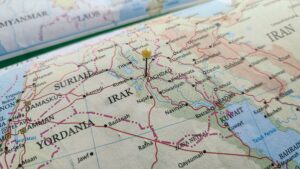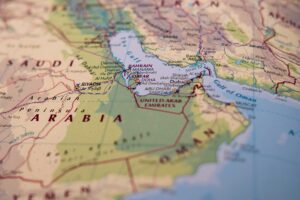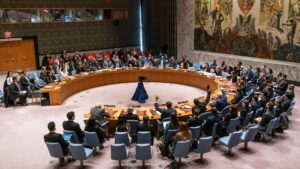The militant terrorist group known as the Islamic State of Iraq and the Levant (ISIL or ISIS for short and also called Daesh) emerged in 2014 in Mosul, Iraq’s second-largest city. Led by Abu Bakr al-Baghdadi, who had broken away from Al-Qaeda, the group successfully captured about one-third of Syria and 40 percent of Iraq between 2013 and 2017.[i] The main goal of ISIS was to establish an Islamic caliphate in Iraq and Syria and then expand it to other parts of the world. The organization gradually expanded its operations to other countries, including Afghanistan, Yemen, Libya, Nigeria, Indonesia and several others.[ii] By 2015, the group had recruited around 30,000 fighters from more than 85 different countries.[iii] Over a four-year period between 2013 and 2017, approximately 28,000 people were killed in ISIS terrorist attacks or in territories controlled by the group. Moreover, ISIS was responsible for 51 terrorist attacks in eight European countries (including France, Germany, the UK, Belgium, and Spain) during this period, resulting in both deaths and injuries.[iv]
ISIS faced a strong international response in 2017 with the US-led coalition in addition to Russian and Iranian forces dealing significant damage to the group. As a result, ISIS lost control over approximately 95% of its territory, including two major cities, Mosul and Raqqa.[v] The same year, Iraqi Prime Minister Haider al-Abadi declared victory over ISIS.[vi] Two years later, on October 27, 2019, ISIS leader al-Baghdadi was killed in a US raid in Idlib, northwest Syria.[vii]
ISIS is still operational in different parts of the world with the intention of maintaining its threat to security.
Although ISIS lost territorial control in multiple Middle Eastern countries in 2017, the group has not been completely eradicated. It is necessary to emphasize that ISIS is still operational in different parts of the world with the intention of maintaining its potential threat to security. According to reports, ISIS currently has about 5,000 to 7,000 fighters in Iraq and Syria and is constantly recruiting.[viii] In addition, there are approximately 30,000 ISIS fighters in detention facilities in the two countries.[ix] In Syria, ISIS has expanded the scope of its operations in the central Syrian Badiyah desert, and has carried out numerous terrorist attacks in the Deir ez-Zor al-Mayadeen, Idlib and Al-Hasakah regions in 2023.[x] In Iraq, ISIS has continued its logistical operations in the Anbar and Nineveh provinces, including the city of Mosul, and has maintained a presence in Kirkuk, Diyala, Salah Al-Din, as well as northern Baghdad.[xi] According to the Washington Institute, ISIS now has some twenty branches and networks in different areas of the world, particularly in the Middle East, Africa, Southeast Asia, and Southwest Asia.[xii] In addition, the group has maintained or expanded its operational capabilities in Afghanistan, Yemen, Mozambique, and Burkina Faso. Joe Buccino US Central Command (CENTCOM) spokesman also highlighted that “though its capability is degraded, ISIS retains the ability to direct and inspire attacks in the region and abroad”.[xiii] The organization has carried out more than 2700 terrorist attacks worldwide in both 2020 and 2021.[xiv] Additionally, around 1500 attacks by ISIS were recorded in different regions of the world in 2022.[xv]
ISIS seeks to use Africa's unique geographical features and fragile socio-political circumstances to accelerate its reconstruction process.
In recent years, Africa has been one of the primary areas of ISIS terrorist activity. ISIS seeks to use Africa’s unique geographical features—specifically its remote areas such as deserts—and fragile socio-political circumstances to accelerate its reconstruction process. Considering the African continent as one of the possible options for reestablishing the Islamic Caliphate, ISIS has turned to recruitment and acquiring equipment in Mozambique, Burkina Faso, the Democratic Republic of Congo (DRC), Nigeria, and Mali.[xvi] Today, the Islamic State Central Africa Province (with 1500-2000 fighters), the Islamic State Sahel Province, Islamic State Mozambique (with 180-220 fighters), the Islamic State Sinai Province (with 100-500 fighters), and the Islamic State West Africa Province (with 3500 fighters) are among the most prominent ISIS networks in Africa.[xvii] Following the example of other ISIS branches, these groups have attacked military units as well as civilians in 2023. In the first six months of last year, nearly 1800 terrorist attacks were recorded in West Africa alone, killing nearly 4600 people.[xviii] Given the presence of a large number of ISIS fighters in this region, a significant portion of the attacks may be attributed to ISIS.
The increase in the number of displaced people has made Africa more vulnerable to the rise of ISIS in recent years. At the moment, there are about 40.4 million displaced people on the African continent[xix], serving as desirable targets for ISIS for the purposes of recruitment. Although ISIS and other terrorist groups are themselves a major factor in the increase of displacement in Africa, the pressure caused by difficult living conditions can also render joining ISIS more attractive.
ISIS in Afghanistan—known as the Islamic State-Khorasan Province—currently has between 4000 and 5000 fighters. The Taliban’s return to power in Afghanistan in August 2021 has given ISIS a significant opportunity to expand its activities in the region. This branch of ISIS has also carried out a large number of terrorist operations in Afghanistan and neighboring countries, particularly Pakistan, in recent years. According to statistics provided by the Global Centre for the Responsibility to Protect, more nearly 4000 people were killed and injured in attacks by the Khorasan branch between August 2021 and May 2023.[xx] In 2023, the group carried out around 17 terrorist attacks in Pakistan alone.[xxi] ISIS has also expanded its influence to Indonesia and the Philippines. According to reports, ISIS has around 200 fighters in the region.[xxii] In the past two years, the group has organized multiple terrorist attacks in both countries, but a number of its plans have been foiled by security agencies.[xxiii]
It should be noted that the threat posed by ISIS has not been limited to Asia and Africa, and the group is seeking to expand its reach to Europe, the Americas, Australia and other parts of the world. In March 2023, several ISIS supporters were arrested in Europe, the US and Canada.[xxiv]
While major military powers should assist developing states in the fight against ISIS cells, the use of force alone is not enough. Social and political structures must be consolidated—or in some cases, rebuilt—in the long term as terrorism has a deep connection with poverty, and social and political instability.
There are still major obstacles to the complete eradication of the group. One of these is in cyberspace, which ISIS easily uses for its recruitment of fighters, channeling of funding, and spreading of propaganda.
Despite extensive international efforts against ISIS (most notably by the Global Coalition against Daesh), the group has continued to carry out deadly attacks in different parts of the world. One of their most recent attacks took place in Kerman, Iran, killing 89 people and wounding 286.[xxv] These attacks are a reminder that there are still major obstacles to the complete eradication of the group. One of these obstacles is in cyberspace, which ISIS easily uses for its recruitment of fighters, channeling of funding, and spreading of propaganda. Previously, ISIS had approximately 46,000 followers on Twitter alone, producing 90,000 tweets per day.[xxvi] Illegal access to weapons is an additional notable challenge. ISIS has easily been able to supply its weapons through fake companies or middlemen. According to reports, ISIS forces in the past have contacted 50 companies in more than 20 countries to meet their weapons needs.[xxvii] Low levels of cooperation between states, corruption, and weak political and social structures in third world countries, especially in the Middle East and Africa, are also major obstacles to subduing the group. For example, Syria and Iraq, which are considered the primary centers of ISIS’s growth, ranked 177th and 154th, respectively, out of 180 countries on the 2023 Corruption Index.[xxviii] As long as these structural challenges exist, ISIS or other terrorist and militant groups will remain a major international threat.
[i] Wilson Center, (2019). “Timeline: The Rise, Spread, and Fall of the Islamic State”, retrieved from https://www.wilsoncenter.org/article/timeline-the-rise-spread-and-fall-the-islamic-state.
[ii] Center for International Security and Cooperation, (2021). “The Islamic State”, retrieved from https://cisac.fsi.stanford.edu/mappingmilitants/profiles/islamic-state.
[iii] National Bureau of Economic Research, (2016). “Where Are ISIS’s Foreign Fighters Coming From?”, retrieved from https://www.nber.org/digest/jun16/where-are-isiss-foreign-fighters-coming.
[iv] Statista, (2019). “The Rise And Fall Of ISIS”, retrieved from https://www.statista.com/chart/20255/the-rise-and-fall-of-isis/.
[iv] Sputnik, (2017). لیست بلندبالای کشتار داعش منتشر شد [“Long list of ISIS killings released”], retrieved from https://spnfa.ir/20170701/%D8%AF%D8%A7%D8%B9%D8%B4-%DA%A9%D8%B4%D8%AA%D8%A7%D8%B1-%D8%AA%D8%B1%D9%88%D8%B1-2642387.html.
[v] Wilson Center, (2019). “Timeline: The Rise, Spread, and Fall of the Islamic State”, retrieved from https://www.wilsoncenter.org/article/timeline-the-rise-spread-and-fall-the-islamic-state.
[vi] Reuters, (2017) “Iraq declares final victory over Islamic State”, retrieved from https://www.reuters.com/article/mideast-crisis-iraq-islamicstate-idINKBN1E30D4.
[viii] The White House, (2019). “Remarks by President Trump on the Death of ISIS Leader Abu Bakr al-Baghdadi”, retrieved from https://trumpwhitehouse.archives.gov/briefings-statements/remarks-president-trump-death-isis-leader-abu-bakr-al-baghdadi/.
[vii] Ibid.
[viii] The Meir Amit Intelligence and Terrorism Information Center, (2023). “Spotlight on Global Jihad (August 9-16, 2023)”, retrieved from https://www.terrorism-info.org.il/en/spotlight-on-global-jihad-august-9-16-2023/.
[ix] Manara Magazine, (2023). “The ISIS Threat in 2023”, retrieved from https://manaramagazine.org/2023/02/the-isis-threat-in-2023/.
[x] The Meir Amit Intelligence and Terrorism Information Center, (2023). “Spotlight on Global Jihad (August 9-16, 2023)”.
[xi] UN Security Council, (2023). “Sixteenth report of the Secretary-General on the threat posed by ISIL (Da’esh) to international peace and security and the range of United Nations efforts in support of Member States in countering the threat”, retrieved from https://documents.un.org/prod/ods.nsf/xpSearchResultsM.xsp.
[xii] The Washington Institute, (2023) “A Survey of the 2023 Terrorism Threat Landscape”, retrieved from https://www.washingtoninstitute.org/policy-analysis/survey-2023-terrorism-threat-landscape.
[xiii] U.S. Central Command, (2023). “CENTCOM Month in Review, March 2023: The Fight Against ISIS in Iraq and Syria”. retrieved from https://www.centcom.mil/MEDIA/PRESS-RELEASES/Press-Release-View/Article/3351042.
[xiv] Meir Amit Intelligence and Terrorism Information Center, (2021). “Summary of ISIS activity around the globe in 2021”, retrieved from https://www.terrorism-info.org.il/en/summary-of-isis-activity-around-the-globe-in-2021/
[xv] The Soufan Center, (2023). “IntelBrief: South Africa Has Emerged as a Financial Hub for ISIS in Africa”, retrieved from https://thesoufancenter.org/intelbrief-2023-march-21/.
[xvi] The Soufan Center, (2023). “IntelBrief: South Africa Has Emerged as a Financial Hub for ISIS in Africa”, retrieved from https://thesoufancenter.org/intelbrief-2023-march-21/.
[xvii] American Enterprise Institute, (2023). “The State of al Qaeda and ISIS in 2023”, retrieved from https://www.aei.org/articles/the-state-of-al-qaeda-and-isis-in-2023/.
[xviii] Anadolu Ajansı, (2023). “Over 1,800 terrorist attacks killed 4,600 in West Africa in 2023”, Retrieved from https://www.aa.com.tr/en/africa/over-1-800-terrorist-attacks-killed-4-600-in-west-africa-in-2023/2955002.
[xix] The Africa Center for Strategic Studies, (2023). “African Conflicts Displace Over 40 Million People”, retrieved from https://africacenter.org/spotlight/african-conflicts-displace-over-40-million-people/.
[xx] Azadi Radio, (2023). گزارش یک نهاد بین المللی؛ حملات داعش در افغانستان تلفات سنگینی بجا گذاشته است [“Report from an international institute; ISIS attacks in Afghanistan have caused heavy casualties”], retrieved from https://da.azadiradio.com/a/32571729.html.
[xxi] Center for Strategic & International Studies, (2023) “The Islamic State Threat in Pakistan: Trends and Scenarios”, retrieved from https://csis.org/analysis/islamic-state-threat-pakistan-trends-and-scenarios.
[xxii] American Enterprise Institute, (2023) “The State of al Qaeda and ISIS in 2023”, retrieved from https://www.aei.org/articles/the-state-of-al-qaeda-and-isis-in-2023/.
[xxiii] Ministry of Home Affairs (MHA), (2023). “Singapore Terrorism Threat Assessment Report 2023”, retrieved from https://www.mha.gov.sg/docs/default-source/default-document-library/singapore-terrorism-threat-assessment-report-2023.pdf.
[xxiv] Ibid.
[xxv] Mehr News Agency. (2024). کل تیم تروریستی دخیل در حمله کرمان دستگیر شدند [“Entire terrorist team involved in Kerman attack arrested”], retrieved from https://en.mehrnews.com/news/210429/Entire-terrorist-team-involved-in-Kerman-attack-arrested.
[xxvi] Humaniora, Czasopismo Internetowe, (2019). “ISIS’s use of cyberspace – furthering the organization’s goals utilizing new media”, retrieved from https://pressto.amu.edu.pl/index.php/h/article/view/28113.
[xxvii] Fars News Agency, (2020). داعش چگونه دیوانهوار از چهارگوشه جهان سلاح خرید؟[“How did ISIS madly buy weapons from all over the world?”], retrieved from https://www.farsnews.ir/news/13990919000081.
[xxviii] Trading Economics, (2023). “Corruption Rank by Country”, retrieved from https://tradingeconomics.com/country-list/corruption-rank.

















